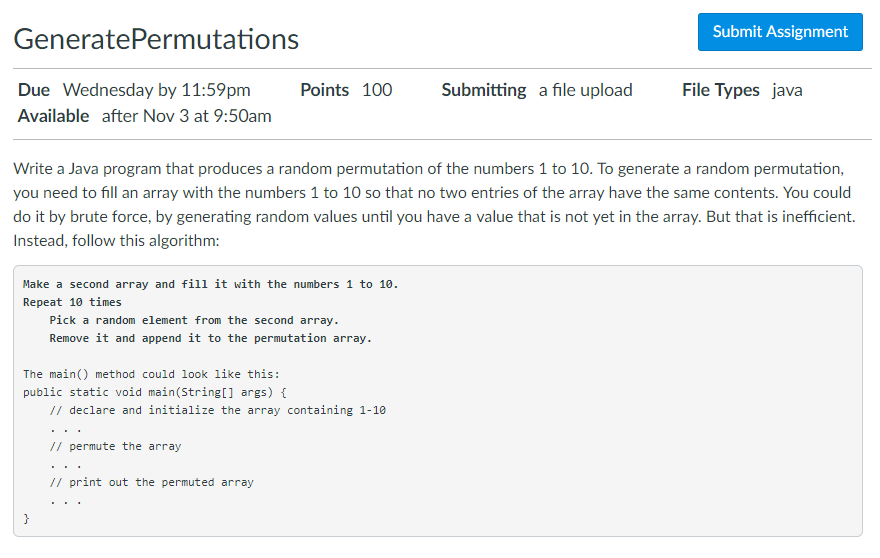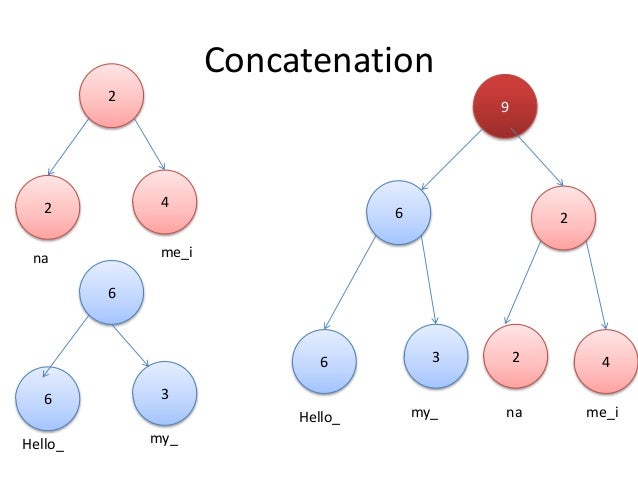

This is like saying "we have r + (n−1) pool balls and want to choose r of them". So (being general here) there are r + (n−1) positions, and we want to choose r of them to have circles. Notice that there are always 3 circles (3 scoops of ice cream) and 4 arrows (we need to move 4 times to go from the 1st to 5th container). The use of random permutations is often fundamental to fields that use randomized algorithms such as coding theory, cryptography, and simulation. basically, you need to swap with random (i,n) instead of with random (1,n) This thread discusses how and why your solution is biased. A random permutation is a random ordering of a set of objects, that is, a permutation-valued random variable. So instead of worrying about different flavors, we have a simpler question: "how many different ways can we arrange arrows and circles?" Flybywind 968 1 11 23 Add a comment 1 Answer Sorted by: 20 This solution is biased, you want the Fisher Yates algorithm which is similar for non biased permutation. Let's use letters for the flavors: (one of banana, two of vanilla): A typical example of such a test is to take some permutation statistic for which the distribution is known and test whether the distribution of this statistic on a set of randomly generated permutations closely approximates the true distribution.Let us say there are five flavors of icecream: banana, chocolate, lemon, strawberry and vanilla. dims ( tuple of python:int) The desired ordering of dimensions Example > x torch.randn(2, 3, 5) > x.size() torch.Size ( 2, 3, 5) > torch.permute(x, (2, 0, 1)).size() torch. Parameters: input ( Tensor) the input tensor.


There are many possible randomness tests for random permutations, such as some of the Diehard tests. Returns a view of the original tensor input with its dimensions permuted. The first n moments of this distribution are exactly those of the Poisson distribution.Īs with all random processes, the quality of the resulting distribution of an implementation of a randomized algorithm such as the Knuth shuffle (i.e., how close it is to the desired uniform distribution) depends on the quality of the underlying source of randomness, such as a pseudorandom number generator. When n is big enough, the probability distribution of fixed points is almost the Poisson distribution with expected value 1. In particular, it is an elegant application of the inclusion–exclusion principle to show that the probability that there are no fixed points approaches 1/ e. The probability distribution of the number of fixed points in a uniformly distributed random permutation approaches a Poisson distribution with expected value 1 as n grows. It's easy to verify that any permutation of n elements will be produced by this algorithm with probability exactly 1/ n!, thus yielding a uniform distribution over all such permutations. , x i − 1 have already been chosen), one chooses a number j at random between 1 and n − i + 1 and sets x i equal to the jth largest of the unchosen numbers.Ī simple algorithm to generate a permutation of n items uniformly at random without retries, known as the Fisher–Yates shuffle, is to start with any permutation (for example, the identity permutation), and then go through the positions 0 through n − 2 (we use a convention where the first element has index 0, and the last element has index n − 1), and for each position i swap the element currently there with a randomly chosen element from positions i through n − 1 (the end), inclusive. This can be avoided if, on the ith step (when x 1. This brute-force method will require occasional retries whenever the random number picked is a repeat of a number already selected. One method of generating a random permutation of a set of size n uniformly at random (i.e., each of the n! permutations is equally likely to appear) is to generate a sequence by taking a random number between 1 and n sequentially, ensuring that there is no repetition, and interpreting this sequence ( x 1. Generating random permutations Entry-by-entry brute force method For example, suppose we want to test whether or not fertilizer A or fertilizer B leads to more growth in 24 plants across six different fields. A good example of a random permutation is the shuffling of a deck of cards: this is ideally a random permutation of the 52 cards. Permuted block randomization is a technique that can be used to randomly assign individuals in an experiment to a certain treatment within a block.

For example, you might want to permute the rows of a matrix as part of a bootstrap computation or some other resampling technique. Sequence where any order is equally likelyĪ random permutation is a random ordering of a set of objects, that is, a permutation-valued random variable. Random permutations of rows You can use permutations in many ways.


 0 kommentar(er)
0 kommentar(er)
